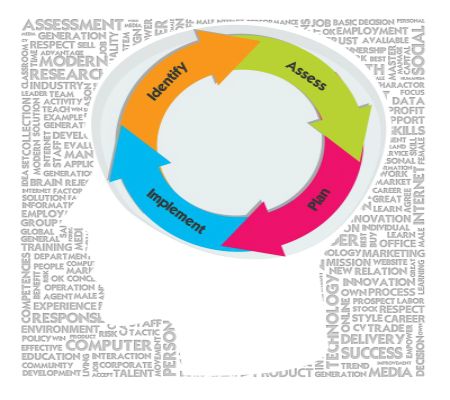Innovation seems to be the new word for success in the 21st century. Startups, products, small companies and large organizations; they all hear the same thing: “You must learn how to embrace innovation”. It seems like such a broad, vague term. After all, its definition is “the action or process of innovating”, derived from the Latin word “innovatio”. Synonyms include: change, alteration, revolution, upheaval, transformation, metamorphosis, breakthrough.
Mentions of the word have been on the incline in the past 60 years. It’s become apparent that organizations need to embrace a culture of innovation to achieve success, but it hasn’t become very apparent how we can do it.
Some companies focus on product innovation. Vijay Govindarajan and Jatin Desai of Harvard Business Review believe that this is only a short-term path to success, and it provides no real, long-lasting results. They state that most organizations focus on building product innovation engines, but these products are quickly copied and never last very long. They don’t create a long-term advantage, and instead, only a huge investment in the development stage with a minimal ROI.
Govindarajan’s and Desai’s answer is this:
“To achieve sustainable growth, companies must better integrate product innovation with business model, process and service innovations”.
This means a complete company transformation; a metamorphosis, if you will. But we all know how hard change is, and some of the larger, more established companies are afraid of change. They have a mindset of “if it isn’t broke, why fix it?” The better question in this scenario is: Why do we change the oil in our cars every 3000 miles? Because we want to fix it before it breaks.
Innovation is Simpler than you Think
The hamburger was created in 1900 by Louis Lassen, a Danish immigrant who had recently move to the U.S. The food was named “the hamburger” by rowdy sailors from Hamburg, who decided to name the sandwich after themselves due to it’s popularity amongst their clique. The cheeseburger was created in 1926 by Lionel Sternberger, who experimentally dropped a piece of cheese on the sandwich while working at age 16 in his fathers sandwich shop in Pasadena, California.
I’ve taken away two things from this little fact:
- It took someone 26 years to put a piece of cheese on a hamburger.
- Innovation can be extremely simple, and it can at any moment.
The piece of cheese on the hamburger changed the world forever, and 14 years later, the worlds largest fast food chain (McDonalds) embraced Sternberger’s idea and built a legacy around it. Your organization’s problems may not be solved simply by putting a piece of cheese on ground meat, but it’s next innovative idea could certainly be simpler than you think it is.
An Innovative Culture Requires a Dualistic Mindset
Govindarajan and Desai say that transforming your company requires “a dedicated process for nurturing and commercializing valuable ideas”. This requires a dualistic mindset, where the organization maintains it’s ability to deliver results that are aligned with set terms and simultaneously is able to prepare for different results each year.
They provide a list of five crucial barriers and risks companies will face when attempting to achieve a global, innovative mindset, based on their field work with Global 2000 companies.
- Lack of the Right Mindset: Some companies have great ideas and innovations, but don’t maintain a proper mindset that will manage these ideas and launch them forward. Sony created the first iPod equivalent, but couldn’t cash in on it because of internal battles within the company. Their groundbreaking product was squashed by their lack of shared goals within the organization.
- Resource and Investment Allocation: Competition between departments for the same funds is a waste of time and, sometimes, results in duplicated processes and inefficiencies. Organizations should use their funds to properly assess where and how much each department will receive for each project. They should also consistently adapt the allocation of these funds as projects change.
- Human Capital Not Being Utilized: The trend has been that the larger the organization gets, the less urgency it presses on it’s employees. This is because the pace of change and action slows since the organization has become comfortable in it’s own skin. Don’t be a larger organization that’s reluctant to change and taking new risks. The key to innovating is to keep and open mind and to keep designing new products and ideas.
- Broad Capabilities, Little Opportunity: Many larger companies have expanded their product lines and capabilities, leaving them paralyzed when a disruptive opportunity comes their way. With so many channels and customers to please in different areas, it’s hard to maintain a specific focus and recognize when an innovative technology or product could provide an explosion of opportunity in one specific area.
- Reluctant Risk Taking: Organizations who have failed in the past when taking a risk can fall into a disgruntled state of “i’ll never do that again”. It’s important to remember that risk taking is one of the keys to innovating, and thinking outside-the-box is so valuable because it’s not inside the box of “safety and normalcy”.
Trevor Micklow is a business writer and content curator based out of Chicago, IL. US. He specializes in digital strategies, social media, psychology, executive education and business school related topics. He has been working and coordinating the general content of IntelligentHQ’s business school directory, which gives key information and programme details on the top business schools in the world. He has a BS, Psychology from Central Michigan University.


























